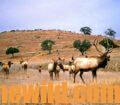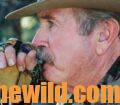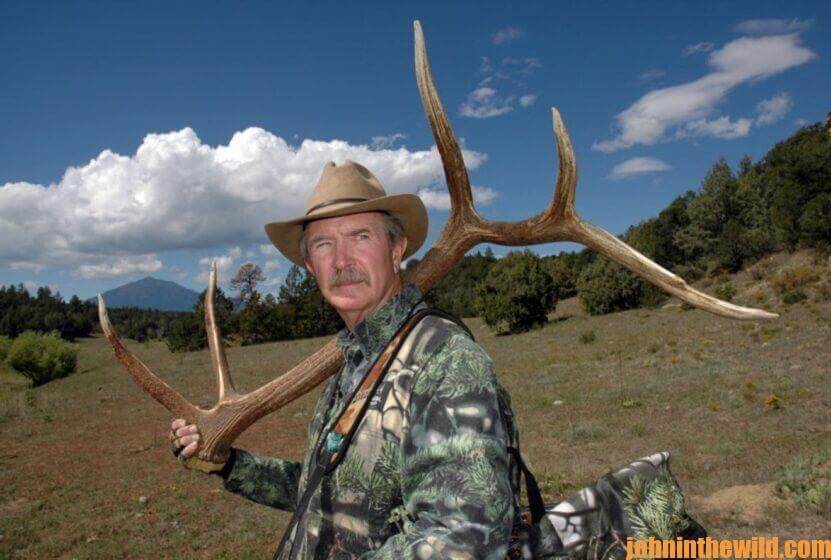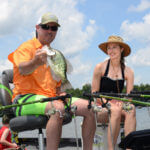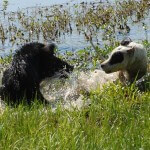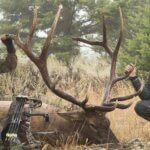 Editor’s Note: Wayne Carlton, of Montrose, Colorado, helps design elk calls, guides hunters to elk and is a TV host (https://www.nativebycarlton.com/). Now’s the time when many hunters are starting to get in shape and gather their equipment to go elk hunting out West. This week Carlton will tell us the most-common mistakes elk hunters make and also teach us a better way to call elk.
Editor’s Note: Wayne Carlton, of Montrose, Colorado, helps design elk calls, guides hunters to elk and is a TV host (https://www.nativebycarlton.com/). Now’s the time when many hunters are starting to get in shape and gather their equipment to go elk hunting out West. This week Carlton will tell us the most-common mistakes elk hunters make and also teach us a better way to call elk.
 John E. Phillips: Wayne, how long have you been hunting elk?
John E. Phillips: Wayne, how long have you been hunting elk?
Carlton: I’ve been hunting elk for more than four decades.
Phillips: Most people like to begin hunting elk before daylight, but you don’t. Tell us why.
Carlton: A lot of people want to go out before the sun comes-up. Often that’s good to do that, and watching the sun rise is always beautiful. But, in some places where you hunt elk, like in canyons, you can end-up creating a lot of commotion just getting there. Sometimes you’ll never spot the elk you want to chase, and if you do see them, you end up watching them walking away. I’m a midday hunter, but not because I want to sleep late. I hunt in the middle of the day, because I’m trying to hunt the elk in the areas where they feel comfortable. I’ve learned a long time ago that I can’t outrun the sun. When the sun’s coming up, and it’s heating the ground, the thermals start to rise instead of moving down. Through my years of hunting elk, I’ve developed a pattern of watching elk at the crack of dawn, providing I don’t scare them off, to see in which stand of timber they’ll be. If you can find that one section of timber, then even with millions of acres to chase the elk, you’ll know the stand of timber they’ve gone into before, and then your search becomes narrowed to an area that size of a pinhead compared to the amount of land you originally have had to consider.
 Phillips: So, you’re hunting bedded elk, is that right?
Phillips: So, you’re hunting bedded elk, is that right?
Carlton: I like to hunt bedded elk at midday. But, if you can’t hunt bedded elk due to the terrain, then hunt them early in the morning and late in the evening.
Phillips: Wayne, what’s the advantage of hunting bedded elk?
 Carlton: The advantage is only a theory, but think of yourself. Where do you usually feel the most-comfortable and secure? Generally it’s in your bedroom. You put your head down and feel secure enough to go to sleep peacefully. I don’t think that elk are that different. The reason elk stay in their bedding areas during the middle of the day is because they feel very secure there. They don’t move around in their bedding areas, so you don’t have to chase or outrun them up the side of a mountain. But when I hike, I’m panting, I’m doing all the physical stuff just to get level with or higher than the elk. I really want to be above the elk, because hopefully, the drafts will go-up the mountain during the day, so they won’t see me. I use an adjacent drainage, not the same drainage the elk has used to get above the elk. Then I’ll let the draft come up in my face and go down to them. Traveling downwards doesn’t exert the same kind of energy as going up. You can hunt much better, because you’re not in a stressful situation. You can become more of a predator coming-down, trying to see an elk before the elk sees you, or you can set-up in area where you can call an elk.
Carlton: The advantage is only a theory, but think of yourself. Where do you usually feel the most-comfortable and secure? Generally it’s in your bedroom. You put your head down and feel secure enough to go to sleep peacefully. I don’t think that elk are that different. The reason elk stay in their bedding areas during the middle of the day is because they feel very secure there. They don’t move around in their bedding areas, so you don’t have to chase or outrun them up the side of a mountain. But when I hike, I’m panting, I’m doing all the physical stuff just to get level with or higher than the elk. I really want to be above the elk, because hopefully, the drafts will go-up the mountain during the day, so they won’t see me. I use an adjacent drainage, not the same drainage the elk has used to get above the elk. Then I’ll let the draft come up in my face and go down to them. Traveling downwards doesn’t exert the same kind of energy as going up. You can hunt much better, because you’re not in a stressful situation. You can become more of a predator coming-down, trying to see an elk before the elk sees you, or you can set-up in area where you can call an elk.
 Phillips: Wayne, tell me what kind of string you use, and why you keep that string tied on your bow and on your bugle?
Phillips: Wayne, tell me what kind of string you use, and why you keep that string tied on your bow and on your bugle?
Carlton: I use what’s called poly yarn, a yarn used in the fly-fishing industry for tying flies. If it gets wet, you can run it between your thumbnail and index finger to squeeze the water out, and it will continue to work. Too, I use it because it gives me constant knowledge of the wind. It lets me know which way the draft will go without having to shake a puff bottle, which creates movement. Sometimes being in a tree stand with somebody shaking a white-powder bottle to see which direction the gust is blowing creates quite a bit of movement. I put poly yarn on my bow and my grunt tube and can hang it on a limb in a tree stand. Most of the time, you already know what the wind is doing, because it’s blowing hard enough to tell you. However, sometimes there’s a very-subtle draft that’s hard to distinguish, unless you have a wind detector. I like the poly yarn because it doesn’t have a lot of movement and helps me detect the more-subtle winds.
 Phillips: I’ve heard you say that downward drafts can move elk. Can you explain that?
Phillips: I’ve heard you say that downward drafts can move elk. Can you explain that?
Carlton: When you see elk, they may run left or run right, but if you see which direction they’ve gone, you can get in there and set-up to try and call. If you challenge the elk with a light-sounding bugle instead of cow calls, you’ll learn that cow elk aren’t different than hen turkeys. There are times when a hen turkey doesn’t want any competition, so when you start whining on a cow elk call, it won’t always influence the bull so much, but rather that sound will affect the lead cow, which doesn’t want any competition. The lead cow will leave, and then the bull simply will follow her. If a cow tries to break out of the herd, and there’s another bull around, that bull will chase the cow back to the herd. Generally, the lead cow will make the decisions for the whole party.
 Phillips: So, you’re really trying to call the cow to you, right?
Phillips: So, you’re really trying to call the cow to you, right?
Carlton: Well, you’re not so much trying to call the cow to you as you’re trying not to run the cow off. If you can get close, put some bugles in there and call the bull to you and not scare the cow off, then you’ve done your job. You’ve created an opportunity.
To learn more about hunting elk successfully, check out John E. Phillips’ book, “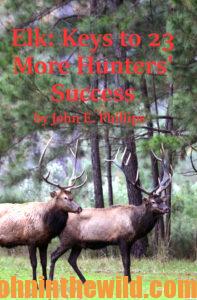 ,” available in Kindle, print and Audible at https://www.amazon.com/gp/product/B09B2H9V6Y/ref=dbs_a_def_rwt_hsch_vapi_tkin_p1_i2.
,” available in Kindle, print and Audible at https://www.amazon.com/gp/product/B09B2H9V6Y/ref=dbs_a_def_rwt_hsch_vapi_tkin_p1_i2.
You may have to copy and paste this click into your browser. (When you click on this book, notice on the left where Amazon allows you to read and hear 10% of the book for free). On the right side of the page and below the offer for a free Audible trial, you can click on Buy the Audible with one click.
Tomorrow: Wayne Carlton Tells More on Hunting Elk

